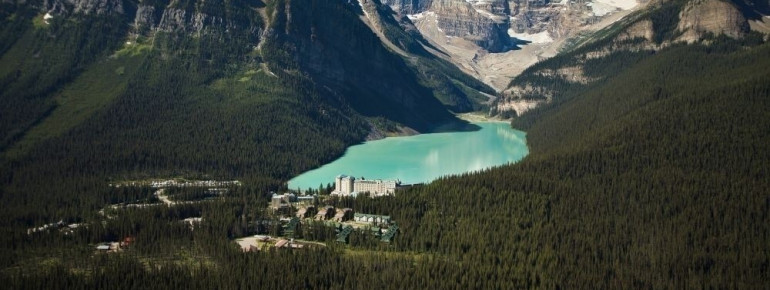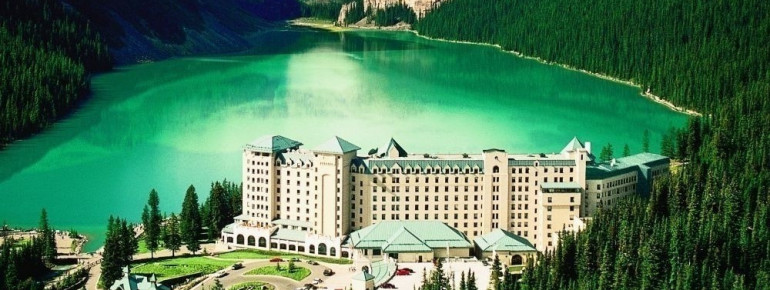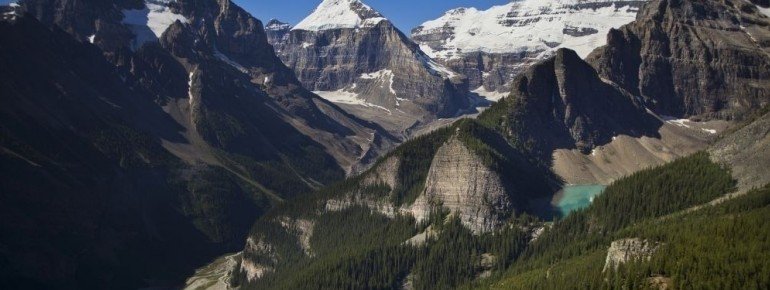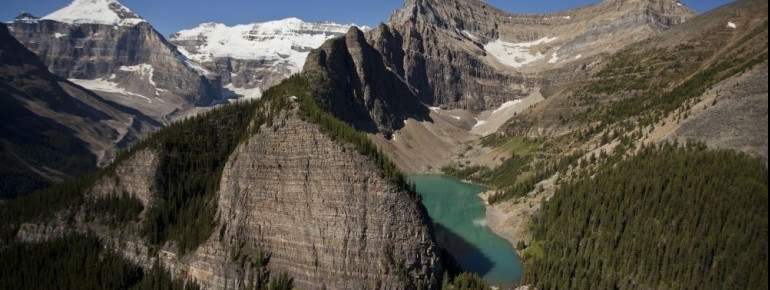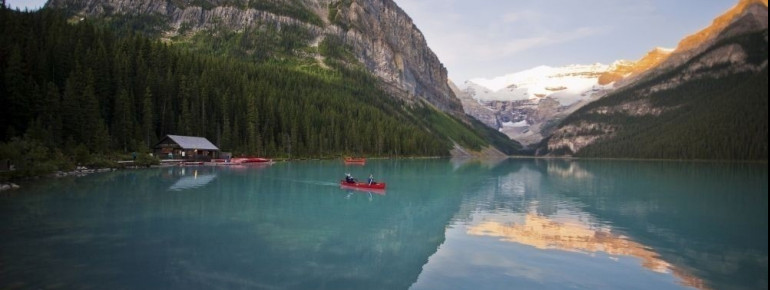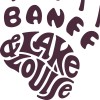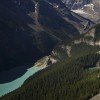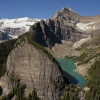Contents
Description
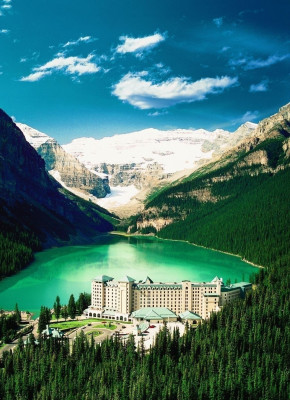
Copyright: Banff Lake Louise Tourism
The Turquoise Lake
Yearning for a breath-taking panorama, there's no better place to go to than Lake Louise if you want to spent an entire day outdoor enjoying the pleasures of a dreamlike turquoise lake in front of a picturesque mountain backdrop.
It is the stone dust coming from the glacier in the water that produces the unique bright shimmery light of the lake. The stone dust particles reflect the blue and green wavelengths of light and, optically speaking, create a unique and beautiful natural spectacle.
The Gate to the Atlantic
High above Lake Louise, you will have the chance to have a view on the fascinating mountainous landscape: Mount Victoria and Victoria Glacier, between which runs a continental water divide. All western water currents find their way into the Atlantic Ocean, whereas on the other side of the mountain ridge, the water runs into the Pacific Ocean. Geographically, this Lake Louise can also be seen as an interface and gains, in this respect, even more relevance.
Attractions at Lake Louise
Apart from the beautiful natural surroundings, there are plenty of other attractions around the lake you may want to participate in. Due to the lake being averagely sized, it is ideal for smaller hiking tours. Try and hike along the Saddleback Pass or undertake a detour to Lake Agnes which is just a 3.5km (2.2mi) long walking distance away. If you wish to reach higher altitudes, you may as well climb Fairview Mountain on a height of 2744m (9003ft) difference in altitude. Once you're atop the mountain, Lake Louise appears to be a tiny pond.
Lake Louise is equally famous for its mountain bike trails and its various possibilities to go climbing. On the edge of the lake, you may additionally ride horses or borrow a kayak and explore the lake. You'll find the contact point for rentals at the northeastern spot of the lake. During the winter season you won't be bored here, either. You may go ice fishing or go on a snow shoe hike. Those hikes are often guided by specialists of the Fairmont Chateau Lake Louise and show you the special features of the nature surrounding the lake.
Historical Information
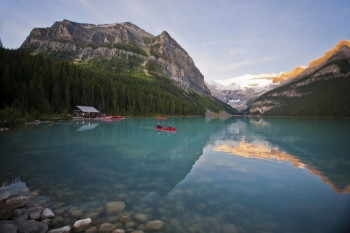
Copyright: Banff Lake Louise Tourism
“Ho-run-num-nay”, literally “the lake of small fish”, is the name of Lake Louise given by the people indigenous to this area. The lake was then named after Princess Louise Caroline Alberta, the fourth daughter of Queen Victoria. Not only was the lake named after her, but also the entire Canadian province Alberta as well as Mount Alberta, the sixth highest mountain of the Canadian Rockies. Originally, the lake was discovered by Tom Wilson in 1882 who was known to be a merchant and explorer located in this area.
Interesting facts
- Lake Louise is among the 5 best rated Tourist Attractions in Canada.
How to get there
By car
From the direction of Calgary
Coming from Calgary, you first follow the Bow Trail heading westwards out of the city and take a right at the intersection into the Sarcee Trail. After a while, you change onto Trans-Canada Highway driving in the direction of Banff. Follow the road for about 170km (105.6mi) until you exit at Bow Valley Parkway which then turns to Lake Louise Drive taking you straight to the lake.
From the direction of Jasper
Starting your journey in Jasper, you first head westwards taking Connaught Drive to get out of the city. After crossing Yellowhead Highway, you will now drive on the Icefields Parkway which you follow for the next 285km (177mi). This way leads you through both the Jasper National Park and parts of the Banff National Park. Exit at Bow Valley Parkway and take a right onto Lake Louis Drive leading straight to the lake.
From the direction of Lethbridge
The Scenic Drive takes you from Lethbridge to the driveway of Crowsnest Highway (Highway 3). Following the highway for the next 18km (11.2mi), you turn right and carry on towards Calgary. And after another 18km (11.2mi), you turn right again and continue the journey as signposted towards Monarch/ Vulcan. You will then get to Highway 23 which you follow until you see the sign to turn left to Claresholm. Once there, take a left and follow the signs to Calgary/ Nanton. Thereafter, you continue on the Queen Elizabeth Highway (Highway 2) taking you to Nanton, passing the Silver Lake on your way northwards. Keep right to get onto the Deerfoot Trail which you will then leave on the outskirts of Calgary to change to Southland Drive before turning right onto the Blackfoot Trail. You eventually change onto the Glenmore Trail and follow the road for about 8km (5mi) before continuing on the Sarcee Trail. Then, you change to Trans-Canada Highway carrying on in the direction of Banff. Exit at Bow Valley Parkway. Taking a right onto Lake Louise Drive you get straight to the lake.
There are parking facilities in the vicinity of the lake.

